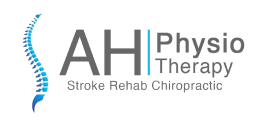Neuroplasticity is the latent power of the brain which helps it to reorganize post any injury and form new neural connections to achieve the lost functions again. This ability of the brain to adjust, adapt and renew itself to find more pathways, create new neural synapses, send signals to learn a new way to do the old task is so crucial in stroke recovery, as the brain compensates for the injury by rewiring itself. Earlier it was believed that brain cells cannot regenerate although modern research has completely changed that belief as now it’s accepted that the brain is capable of change throughout life.
After a stroke, the affected brain areas where blood supply is interrupted show a loss of function in the patient. For eg: when Broca’s area is affected, the patient has difficulty in speech. However, the entire neural supply is most unlikely to be damaged so the neurons and alternate pathways can take over the lost function with repetitive stimulus. To strengthen new connections, principles of neuroplasticity are used by rehab professionals during patient training. In the older times scenarios were different, after initial 6 months it was believed that no further recovery is possible and that was the reason affected brain regions remained dormant, in absence of active stimulation. This led to permanent deficits in stroke survivors earlier.
Current research supports rehabilitation programs that leverage neuroplasticity principles by using repetitive actions for task-specific training and cognitive involvement during therapy( mirror therapy) etc. Early intervention creates a lot of impact on the speed of recovery in stroke survivors
Understanding the mechanisms and neurophysiology of recovery from stroke is a complex and evolving field. Here’s a breakdown of key aspects:
Key Mechanisms of Stroke Recovery:
- Neuroplasticity:
- This is the brain’s ability to reorganize itself by forming new neural connections throughout life. After a stroke, neuroplasticity plays a crucial role in enabling surviving brain areas to take over functions lost due to the damaged tissue.
- This involves processes like:
- Synaptic plasticity: Chemical changes happening leading to the change in the strength of connections between neurons.
- Cortical reorganization: The brain’s cortex remaps itself, with undamaged areas taking on functions previously performed by damaged regions.
- Spontaneous Recovery:
- In the initial period after a stroke, we often see a degree of spontaneous recovery as initial inflammation reduces.
- This early phase is critical and often sees the most rapid improvements.
- Rehabilitation-Induced Plasticity:
- Rehabilitation therapies, such as physical therapy, occupational therapy, and speech therapy, are designed to enhance neuroplasticity.
- These therapies provide repetitive and task-specific training, which stimulates the brain to form new neural pathways.
- Cellular Mechanisms:
- At a cellular level, recovery involves processes like:
- Neurogenesis: The formation of new neurons.
- Angiogenesis: The growth of new blood vessels, which improves blood flow to the brain.
- At a cellular level, recovery involves processes like:
Neurophysiological Aspects:
- Brain Imaging:
- Techniques like functional magnetic resonance imaging (fMRI) and positron emission tomography (PET) are used to study changes in brain activity during stroke recovery.
- These techniques reveal how the brain reorganizes itself and which areas are involved in recovery.
- Transcranial Magnetic Stimulation (TMS):
- TMS is a non-invasive technique that can stimulate or inhibit brain activity.
- It’s used in research to study brain plasticity and as a potential therapeutic tool to enhance stroke recovery.
- Electrophysiology:
- Studies of brain electrical activity, using techniques like electroencephalography (EEG), help to understand how neural networks change after stroke.
Factors Influencing Recovery:
- Stroke Severity and Location: The extent and location of brain damage significantly impact recovery.
- Time Since Stroke: Recovery is most rapid in the initial months after a stroke, but improvements can continue for years.
- Rehabilitation Intensity and Timing: Early and intensive rehabilitation is crucial for maximizing recovery.
- Individual Factors: Age, overall health, and motivation also play a role.
Ongoing Research:
- Researchers are actively investigating new therapies to enhance stroke recovery, including:
- Stem cell therapy.
- Pharmacological interventions.
- Advanced rehabilitation technologies.
It is important to understand that stroke recovery is a very individual process, and the amount of recovery varies greatly from person to person. If you or your loved ones are suffering from stroke, book an online consultation with our team of expert physiotherapist or visit our clinic in Mohali.

